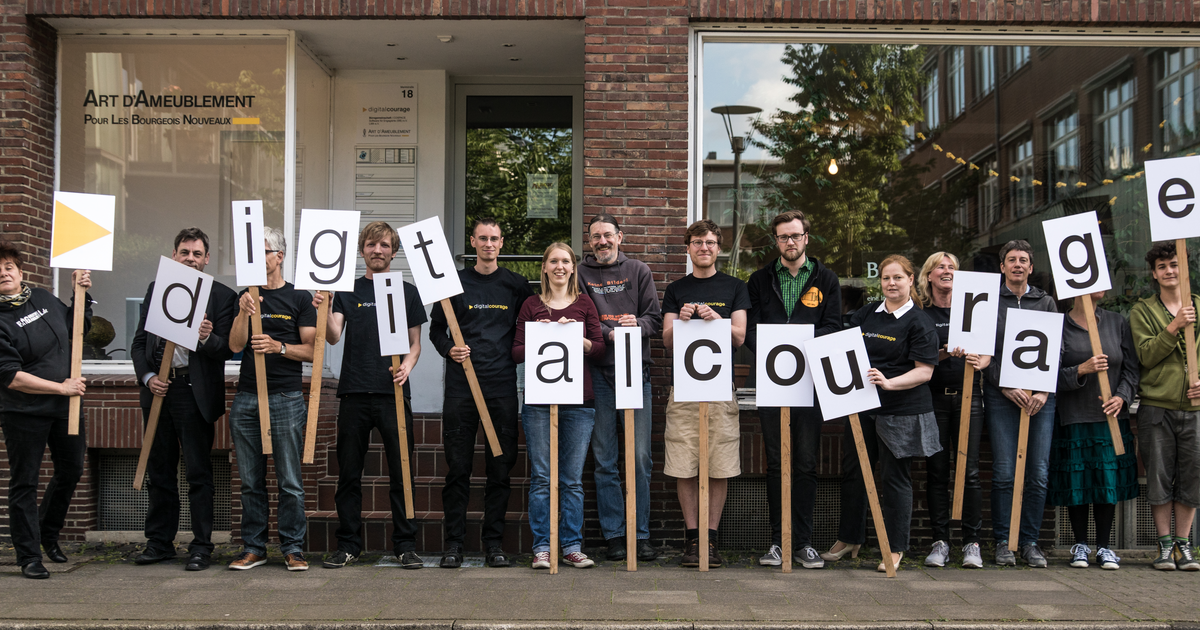Curiosity Drive 🚐<p>Amendment: Following a conversation with nuns at Patriarchate of Peć, while vandalism *was* done to frescos in Our Lady of Ljeviš (& elsewhere), the chipping damage may represent an early attempt at conservation. Although it seems counterintuitive, chipping holes may have allowed moisture trapped behind the paint to escape. This would account for the systematic appearance of the damage, & for its presence in places not readily accessible to casual vandals.</p><p>It’s very hard to find a source to verify this (esp. while on-the-go). Here’s a photo from the exterior of Patriarchate of Peć, showing the chipping (some of which appears filled). Are there any <a href="https://mastodon.nz/tags/art" class="mention hashtag" rel="nofollow noopener" target="_blank">#<span>art</span></a> <a href="https://mastodon.nz/tags/artHistory" class="mention hashtag" rel="nofollow noopener" target="_blank">#<span>artHistory</span></a> buffs who know a thing or two about <a href="https://mastodon.nz/tags/conservation" class="mention hashtag" rel="nofollow noopener" target="_blank">#<span>conservation</span></a> of <a href="https://mastodon.nz/tags/medieval" class="mention hashtag" rel="nofollow noopener" target="_blank">#<span>medieval</span></a> <a href="https://mastodon.nz/tags/frescos" class="mention hashtag" rel="nofollow noopener" target="_blank">#<span>frescos</span></a> & can comment with certainty on what’s going on here?</p>
digitalcourage.social is one of the many independent Mastodon servers you can use to participate in the fediverse.

Diese Instanz wird betrieben von Digitalcourage e.V. für die Allgemeinheit. Damit wir das nachhaltig tun können, erheben wir einen jährlichen Vorausbeitrag von 1€/Monat per SEPA-Lastschrifteinzug.
Administered by:
Server stats:
825active users
digitalcourage.social: About · Status · Profiles directory · Privacy policy
Mastodon: About · Get the app · Keyboard shortcuts · View source code · v4.4.2
#frescos
0 posts · 0 participants · 0 posts today
Joan Carroll<p>These colorful frescos adorn the walls of Sts. Cyril and Methodius Church, the first Serbian Orthodox Church in Ljubljana Slovenia. They depict religious scenes with historical and biblical figures with intricate detail and vibrant colors. </p><p><a href="https://joan-carroll.pixels.com/featured/frescos-sts-cyril-and-methodius-church-ljubljana-slovenia-joan-carroll.html" rel="nofollow noopener" translate="no" target="_blank"><span class="invisible">https://</span><span class="ellipsis">joan-carroll.pixels.com/featur</span><span class="invisible">ed/frescos-sts-cyril-and-methodius-church-ljubljana-slovenia-joan-carroll.html</span></a></p><p><a href="https://photog.social/tags/AYearForArt" class="mention hashtag" rel="nofollow noopener" target="_blank">#<span>AYearForArt</span></a> <a href="https://photog.social/tags/buyIntoArt" class="mention hashtag" rel="nofollow noopener" target="_blank">#<span>buyIntoArt</span></a> <a href="https://photog.social/tags/giftideas" class="mention hashtag" rel="nofollow noopener" target="_blank">#<span>giftideas</span></a> <a href="https://photog.social/tags/wallart" class="mention hashtag" rel="nofollow noopener" target="_blank">#<span>wallart</span></a> <a href="https://photog.social/tags/artforsale" class="mention hashtag" rel="nofollow noopener" target="_blank">#<span>artforsale</span></a> <span class="h-card" translate="no"><a href="https://photog.social/@joancarroll" class="u-url mention" rel="nofollow noopener" target="_blank">@<span>joancarroll</span></a></span> <a href="https://photog.social/tags/slovenia" class="mention hashtag" rel="nofollow noopener" target="_blank">#<span>slovenia</span></a> <a href="https://photog.social/tags/frescos" class="mention hashtag" rel="nofollow noopener" target="_blank">#<span>frescos</span></a> <a href="https://photog.social/tags/paintings" class="mention hashtag" rel="nofollow noopener" target="_blank">#<span>paintings</span></a> <a href="https://photog.social/tags/religious" class="mention hashtag" rel="nofollow noopener" target="_blank">#<span>religious</span></a> <a href="https://photog.social/tags/biblical" class="mention hashtag" rel="nofollow noopener" target="_blank">#<span>biblical</span></a> <a href="https://photog.social/tags/historical" class="mention hashtag" rel="nofollow noopener" target="_blank">#<span>historical</span></a> <a href="https://photog.social/tags/vibrant" class="mention hashtag" rel="nofollow noopener" target="_blank">#<span>vibrant</span></a></p>
Rome archaeology and stuff<p>ancient <a href="https://mastodon.social/tags/graffiti" class="mention hashtag" rel="nofollow noopener" target="_blank">#<span>graffiti</span></a> scratched into the <a href="https://mastodon.social/tags/frescos" class="mention hashtag" rel="nofollow noopener" target="_blank">#<span>frescos</span></a> of a <a href="https://mastodon.social/tags/roman" class="mention hashtag" rel="nofollow noopener" target="_blank">#<span>roman</span></a> house excavated near Termini Station <a href="https://mastodon.social/tags/rome" class="mention hashtag" rel="nofollow noopener" target="_blank">#<span>rome</span></a>. <a href="https://mastodon.social/tags/archaeology" class="mention hashtag" rel="nofollow noopener" target="_blank">#<span>archaeology</span></a> <a href="https://mastodon.social/tags/ancienthistory" class="mention hashtag" rel="nofollow noopener" target="_blank">#<span>ancienthistory</span></a> <a href="https://mastodon.social/tags/romanhistory" class="mention hashtag" rel="nofollow noopener" target="_blank">#<span>romanhistory</span></a> <a href="https://mastodon.social/tags/ancientrome" class="mention hashtag" rel="nofollow noopener" target="_blank">#<span>ancientrome</span></a></p>
Rome archaeology and stuff<p><a href="https://mastodon.social/tags/ancient" class="mention hashtag" rel="nofollow noopener" target="_blank">#<span>ancient</span></a> <a href="https://mastodon.social/tags/roman" class="mention hashtag" rel="nofollow noopener" target="_blank">#<span>roman</span></a> tombs with <a href="https://mastodon.social/tags/frescos" class="mention hashtag" rel="nofollow noopener" target="_blank">#<span>frescos</span></a> and <a href="https://mastodon.social/tags/mosaics" class="mention hashtag" rel="nofollow noopener" target="_blank">#<span>mosaics</span></a> from the necropolis of the via Portuense in <a href="https://mastodon.social/tags/rome" class="mention hashtag" rel="nofollow noopener" target="_blank">#<span>rome</span></a>, at the drugstore museum. <a href="https://mastodon.social/tags/archaeology" class="mention hashtag" rel="nofollow noopener" target="_blank">#<span>archaeology</span></a> <a href="https://mastodon.social/tags/romanempire" class="mention hashtag" rel="nofollow noopener" target="_blank">#<span>romanempire</span></a> <a href="https://mastodon.social/tags/ancienthistory" class="mention hashtag" rel="nofollow noopener" target="_blank">#<span>ancienthistory</span></a> <a href="https://mastodon.social/tags/ancientrome" class="mention hashtag" rel="nofollow noopener" target="_blank">#<span>ancientrome</span></a></p>
Rome archaeology and stuff<p>The remains of an <a href="https://mastodon.social/tags/ancient" class="mention hashtag" rel="nofollow noopener" target="_blank">#<span>ancient</span></a> <a href="https://mastodon.social/tags/roman" class="mention hashtag" rel="nofollow noopener" target="_blank">#<span>roman</span></a> house with <a href="https://mastodon.social/tags/frescos" class="mention hashtag" rel="nofollow noopener" target="_blank">#<span>frescos</span></a> and <a href="https://mastodon.social/tags/mosaic" class="mention hashtag" rel="nofollow noopener" target="_blank">#<span>mosaic</span></a> paving next to the Sessorian Palace in <a href="https://mastodon.social/tags/rome" class="mention hashtag" rel="nofollow noopener" target="_blank">#<span>rome</span></a>. <a href="https://mastodon.social/tags/archaeology" class="mention hashtag" rel="nofollow noopener" target="_blank">#<span>archaeology</span></a> <a href="https://mastodon.social/tags/ancienthistory" class="mention hashtag" rel="nofollow noopener" target="_blank">#<span>ancienthistory</span></a> <a href="https://mastodon.social/tags/romanempire" class="mention hashtag" rel="nofollow noopener" target="_blank">#<span>romanempire</span></a> <a href="https://mastodon.social/tags/romanhistory" class="mention hashtag" rel="nofollow noopener" target="_blank">#<span>romanhistory</span></a> <a href="https://mastodon.social/tags/ancientrome" class="mention hashtag" rel="nofollow noopener" target="_blank">#<span>ancientrome</span></a> <a href="https://mastodon.social/tags/ancientart" class="mention hashtag" rel="nofollow noopener" target="_blank">#<span>ancientart</span></a> <a href="https://mastodon.social/tags/ancientarchitecture" class="mention hashtag" rel="nofollow noopener" target="_blank">#<span>ancientarchitecture</span></a></p>
Rome archaeology and stuff<p>The gorgeous <a href="https://mastodon.social/tags/frescos" class="mention hashtag" rel="nofollow noopener" target="_blank">#<span>frescos</span></a> from the <a href="https://mastodon.social/tags/ancient" class="mention hashtag" rel="nofollow noopener" target="_blank">#<span>ancient</span></a> <a href="https://mastodon.social/tags/roman" class="mention hashtag" rel="nofollow noopener" target="_blank">#<span>roman</span></a> theatre at Nemi near <a href="https://mastodon.social/tags/rome" class="mention hashtag" rel="nofollow noopener" target="_blank">#<span>rome</span></a>. <a href="https://mastodon.social/tags/archaeology" class="mention hashtag" rel="nofollow noopener" target="_blank">#<span>archaeology</span></a> <a href="https://mastodon.social/tags/ancienthistory" class="mention hashtag" rel="nofollow noopener" target="_blank">#<span>ancienthistory</span></a> <a href="https://mastodon.social/tags/ancientart" class="mention hashtag" rel="nofollow noopener" target="_blank">#<span>ancientart</span></a> <a href="https://mastodon.social/tags/romanhistory" class="mention hashtag" rel="nofollow noopener" target="_blank">#<span>romanhistory</span></a> <a href="https://mastodon.social/tags/romanempire" class="mention hashtag" rel="nofollow noopener" target="_blank">#<span>romanempire</span></a></p>
Rome archaeology and stuff<p><a href="https://mastodon.social/tags/ancient" class="mention hashtag" rel="nofollow noopener" target="_blank">#<span>ancient</span></a> <a href="https://mastodon.social/tags/roman" class="mention hashtag" rel="nofollow noopener" target="_blank">#<span>roman</span></a> <a href="https://mastodon.social/tags/frescos" class="mention hashtag" rel="nofollow noopener" target="_blank">#<span>frescos</span></a> in a late Republican-era house sometimes identified as the House of <a href="https://mastodon.social/tags/Augustus" class="mention hashtag" rel="nofollow noopener" target="_blank">#<span>Augustus</span></a> on the Palatine Hill in <a href="https://mastodon.social/tags/rome" class="mention hashtag" rel="nofollow noopener" target="_blank">#<span>rome</span></a>. <a href="https://mastodon.social/tags/archaeology" class="mention hashtag" rel="nofollow noopener" target="_blank">#<span>archaeology</span></a> <a href="https://mastodon.social/tags/ancientart" class="mention hashtag" rel="nofollow noopener" target="_blank">#<span>ancientart</span></a> <a href="https://mastodon.social/tags/ancienthistory" class="mention hashtag" rel="nofollow noopener" target="_blank">#<span>ancienthistory</span></a> <a href="https://mastodon.social/tags/romanempire" class="mention hashtag" rel="nofollow noopener" target="_blank">#<span>romanempire</span></a> <a href="https://mastodon.social/tags/ancientrome" class="mention hashtag" rel="nofollow noopener" target="_blank">#<span>ancientrome</span></a></p>
LCC municipal<p>Some nice postcards of the interiors of Oslo Town Hall (birders will have seen these before) <a href="https://toot.community/tags/Oslo" class="mention hashtag" rel="nofollow noopener" target="_blank">#<span>Oslo</span></a> <a href="https://toot.community/tags/Municipal" class="mention hashtag" rel="nofollow noopener" target="_blank">#<span>Municipal</span></a> <a href="https://toot.community/tags/Townhalls" class="mention hashtag" rel="nofollow noopener" target="_blank">#<span>Townhalls</span></a> <a href="https://toot.community/tags/tapestries" class="mention hashtag" rel="nofollow noopener" target="_blank">#<span>tapestries</span></a> <a href="https://toot.community/tags/frescos" class="mention hashtag" rel="nofollow noopener" target="_blank">#<span>frescos</span></a></p>
TrendingLive feeds
Mastodon is the best way to keep up with what's happening.
Follow anyone across the fediverse and see it all in chronological order. No algorithms, ads, or clickbait in sight.
Create accountLoginDrag & drop to upload